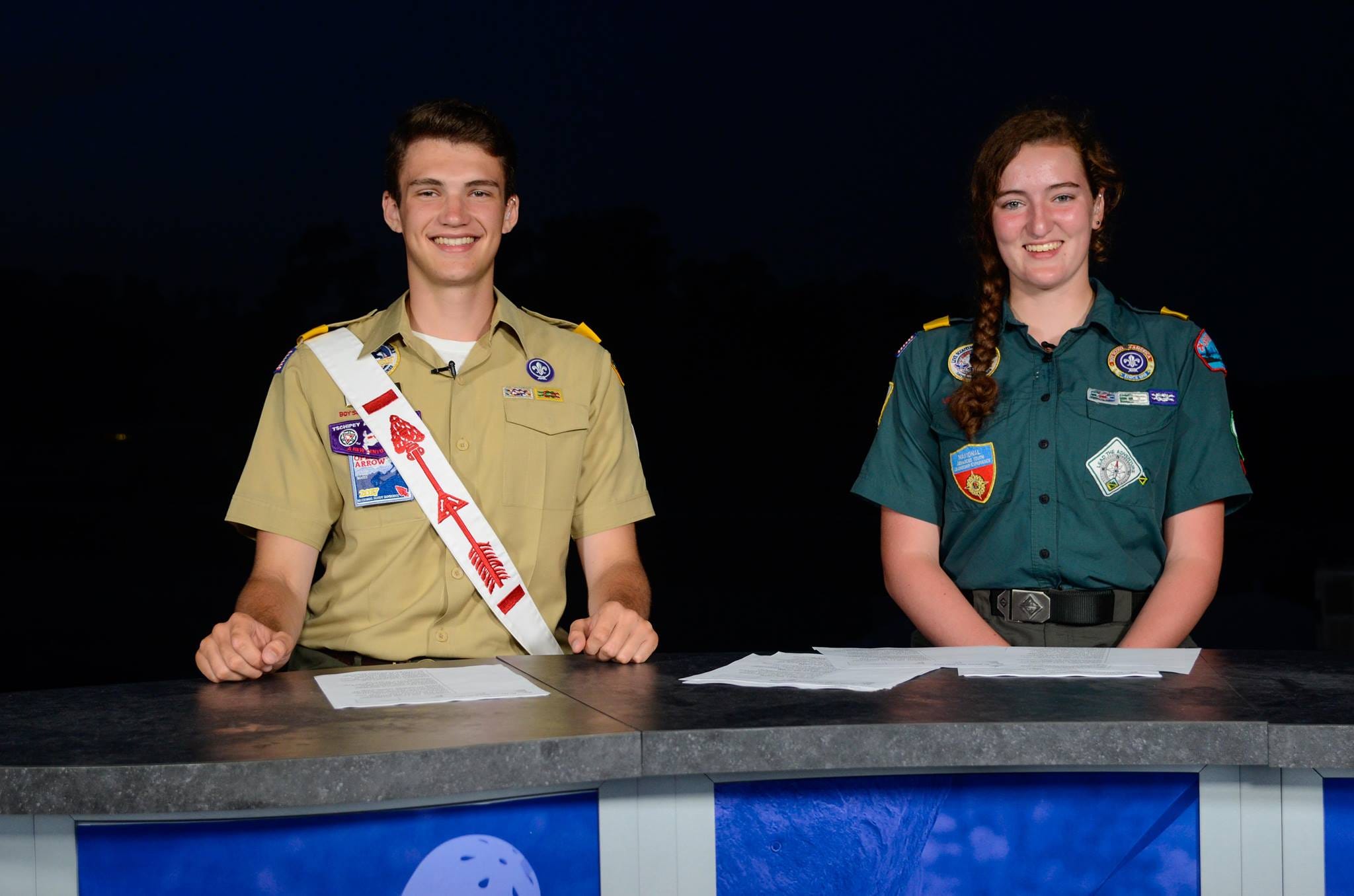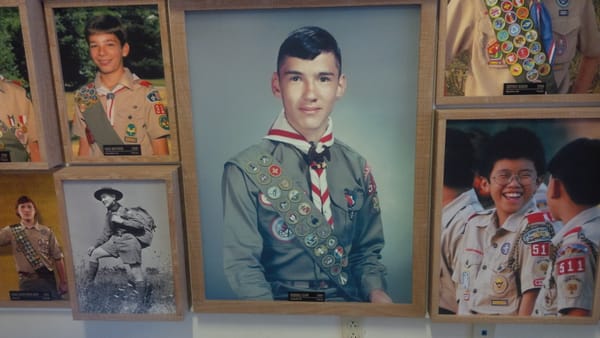Coming out on the national stage
Forrest Gertin was the Boy Scouts' first openly gay national chief. Looking back, he says the culture has changed a lot, but can still do more to support queer youth.

Forrest Gertin always had his stock answers ready. As national chief of the Order of the Arrow, he would often find himself in front of audiences that peppered him with questions about his personal life.
One of these questions, inevitably, was about his love life. It would come in one of two forms. An adult adviser might ask, somewhat jokingly, how a handsome man in uniform could fend off the veritable parade of women that must be knocking down his door. Or a more sincere teenager might ask how someone as busy as the national chief could balance his time and make room for relationships.
Either way, Gertin would say something like: “I’m not in a romantic relationship right now (which was true), but this has really taught me to focus on my friendships.”
This was code for the young people who knew what to listen for, a secret Gertin was not yet comfortable sharing with the world: He was gay.
Although he knew he was gay from a young age, he had only confided in a handful of close friends and family. Gertin grew up in Rochester, New York, surrounded by traditional ideas of manhood: Scouting was a presence in his life since first grade, and he attended an all-boys Catholic high school.
Those experiences were mutually reinforcing, mostly in good ways for Gertin, and cemented his commitment to leadership and service. Plus, as Gertin’s involvement in Scouting grew and he started leading large programs beyond his troop, he felt that he was learning crucial life skills.
"I didn’t have a ton of self confidence. It was a place where I got to practice social skills as well, which was really helpful for the chubby outsider kid in school to say, oh wow, Scouting gives me a place where I could be successful, be a leader,” he said.

At age 15, Gertin came out as gay to his parents, who fully accepted and supported him. But he didn’t come out in school or Scouting until much later. “It was a relatively fearful time for me, particularly when it came to Scouting,” Gertin said.
The Boy Scouts of America had only recently dropped its ban on gay youth, and was still holding onto a ban on gay adults (anyone over the age of 18). It was hard for Gertin to gauge how homophobic his local Scouting council was, but he had spent enough time in the Order of the Arrow to notice how gay people were ostracized or kicked out. He felt that being openly gay would risk his aspirations for national leadership.
Even as the BSA dropped its gay adult ban two years later, Gertin, by then nearing the end of high school, still felt the culture was unwelcoming. He had spent time shadowing Alex Call, who was the national chief that year, and built up the trust to confide in him. But the lesson Gertin learned, especially after seeing Call savaged by rumors about his sexuality at a national conference, was that being out was not an option for national leadership.
“I see why you need to stay closeted here,” Gertin remembers thinking.
At the same time, the conference solidified his desire to seek the role of national chief. Before Gertin ran for the office a year later, he began his first semester as a college freshman at Georgetown University. He knew he wanted to be out on campus, but he was still toeing a fine line, careful not to jeopardize his opportunities in Scouting. At an early open house at the campus LGBTQ center, Gertin chafed at having his picture taken, afraid where it might end up.
But those first days on campus turned into weeks, and Gertin started to see out, joyful queer people all around him. It helped him realize that Georgetown was a welcoming place, and he started to shed some of his fears about being out.
“I really changed a lot of my mindset in a very short amount of time,” Gertin said.

Scouting, however, remained a separate world. He was successful in running for the office of national chief that December, but he was still holding back. “I was not out, and I was incredibly afraid that somebody would call me out,” Gertin said.
A couple of months into the role, Gertin found himself once again in front of a crowd of inquiring Scouters, this time during a session about national Boy Scout policy. A number of adults in the room brought up a recent policy decision by the BSA to welcome trans boys into the ranks. Gertin tried to give his best diplomatic answer, but didn’t really challenge them, and the discussion devolved into a rant about how inclusion of LGBTQ+ scouts was “ruining” the organization.
It made Gertin feel terribly unwelcome, and after he returned home from the event, it dawned on him: What about the young people for whom that transphobic adult is their adviser? What message was he sending by staying silent in the face of that?
"I was like, wow, I can’t do that again. I thought it would be wrong particularly for those young people,” Gertin said.
He spent the next few days calling trusted friends and decided to try a new approach: being openly gay as the top youth leader in the Boy Scouts of America.
There was no big announcement or flashy social media post. Gertin simply stopped shying away from the truth. When asked about his romantic life, he would tell audiences that he didn’t have a boyfriend at the moment. The reactions were almost universally positive, especially from the youth.
“The youth are always ahead of the adults,” Gertin said. “It doesn't matter to most of them anymore."
There was, however, the occasional difficulty. “It was only adults in the organization who were upset or hateful enough to make it known,” Gertin said. It would come in the form of a homophobic joke, or an unfair assumption about his sexuality. But the people that mattered — his close friends and advisers — always supported him.
Looking back, Gertin is happy he made the decision to be more honest. Although he’s not directly involved in much Scouting work these days, he hopes that the organization will continue growing its support for diversity and inclusion.
"Scouting can do a lot to embrace difference as a strength and use it to underpin some of the values that they want young people to learn,” Gertin said.
Because if there’s one thing Gertin takes away from the program, it’s how to embrace the values he’s learned and advocate for them — whether that’s by supporting the inclusion of young women in the Boy Scouts, or calling on the organization to support Black Lives Matter this past summer.
“Scouting has given me a lot of experience standing up for what I believe in,” he said.



